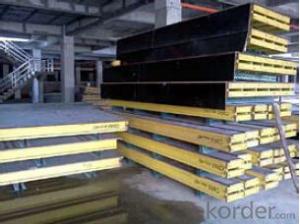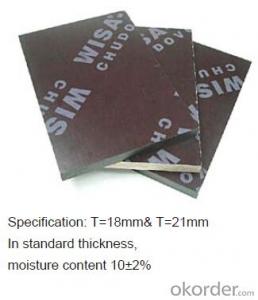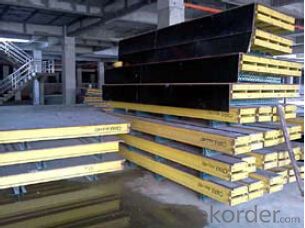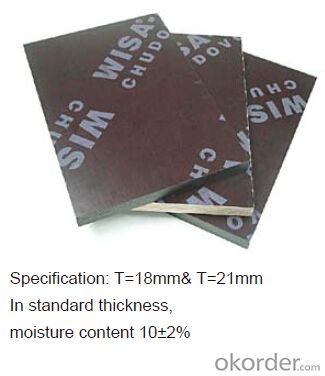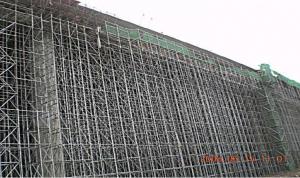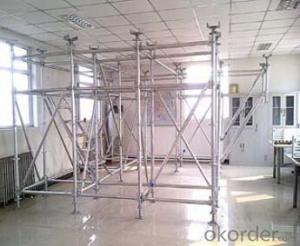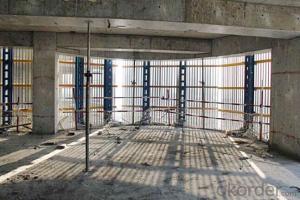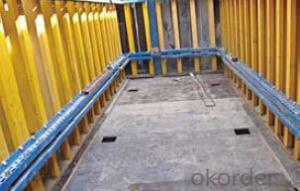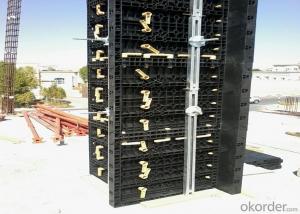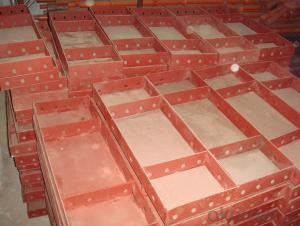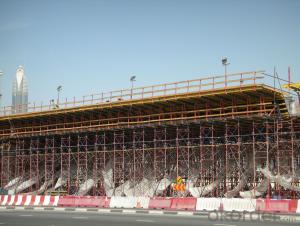Plywood-formwork system for formwork and scaffolding
- Loading Port:
- Tianjin
- Payment Terms:
- TT OR LC
- Min Order Qty:
- 50 m²
- Supply Capability:
- 1000 m²/month
OKorder Service Pledge
Quality Product, Order Online Tracking, Timely Delivery
OKorder Financial Service
Credit Rating, Credit Services, Credit Purchasing
You Might Also Like
Plywood --- make perfect concrete surface
WISA-Form Birch is a coated special plywood using in the formwork systems where high
requirements are set on the concrete surface and the times of reuses.
With CNBM timber beam & WISA plywood, the formwork is low weight but high load capacity, it is
widely used in construction.
Characteristics:
◆ Component with high standardization.
◆ Assembling in site, flexible application.
◆ Light weight, easy transportation and storage.
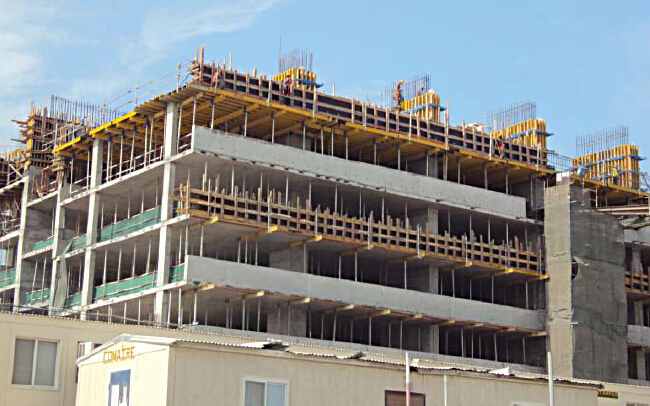
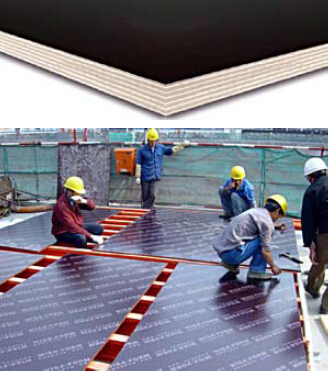
- Q: What are the different types of reinforcement used in steel formwork systems?
- There are several types of reinforcement used in steel formwork systems, each serving a specific purpose in enhancing the structural integrity and durability of the concrete structures. 1. Steel bars: Steel bars, also known as rebars, are commonly used in steel formwork systems to provide tensile strength to the concrete. These bars are placed in the formwork before pouring the concrete, and they help prevent cracking and ensure the stability of the structure. 2. Wire mesh: Wire mesh reinforcement is another commonly used type in steel formwork systems. It consists of a grid of interconnected steel wires that are welded or woven together. Wire mesh reinforcement helps in distributing the loads evenly across the concrete, improving its strength and reducing the risk of cracking. 3. Steel fibers: Steel fibers are small, discrete reinforcing elements that are often added to the concrete mix itself. These fibers enhance the tensile strength of the concrete, making it more resistant to cracking and improving its overall durability. Steel fibers are particularly useful in applications where traditional reinforcement may be difficult to install. 4. Stirrups and ties: Stirrups and ties are commonly used in reinforced concrete structures and are also incorporated into steel formwork systems. They are typically made of steel bars and are used to hold the main reinforcement bars in place and provide additional support to the structure. Stirrups and ties help prevent the rebars from shifting or bending during concrete placement and ensure proper alignment and spacing. 5. Steel plates and brackets: Steel plates and brackets are used in formwork systems to provide additional support and stability to the structure. They are typically attached to the formwork panels and act as reinforcement elements, helping distribute the loads and preventing deformation or failure. Overall, the different types of reinforcement used in steel formwork systems are essential in ensuring the strength, stability, and longevity of concrete structures. They work together to resist external forces, prevent cracking, and enhance the overall performance of the structure.
- Q: How does steel formwork contribute to the overall efficiency of concrete placement?
- The overall efficiency of concrete placement is greatly enhanced by steel formwork. Firstly, the durability of steel formwork allows it to withstand the pressure exerted by fresh concrete, ensuring that it remains intact throughout the pouring and curing process. This minimizes the need for repairs or replacements and allows the construction process to proceed smoothly without delays. In addition to its durability, steel formwork is also known for its high strength and stability. This enables the construction of larger and taller concrete structures, as the formwork can support the weight and pressure without buckling or deforming. Contractors can take advantage of this strength and stability to construct complex shapes and designs, meeting specific architectural requirements efficiently. Steel formwork also offers easy and precise assembly due to its modular nature. This allows for quick installation and dismantling, significantly reducing construction time. The standardized components ensure accurate alignment, leading to consistent and uniform concrete placement. This not only enhances efficiency but also contributes to the quality and aesthetics of the final concrete structure. Furthermore, steel formwork is reusable, unlike traditional timber formwork. This reduces material waste and saves costs as the formwork can be utilized multiple times. The ability to reuse the formwork eliminates the constant need for procurement and disposal of materials, streamlining the construction process and improving overall efficiency. Lastly, steel formwork provides a smooth finish to the concrete surface. Its rigid structure prevents any bulges or deformities, resulting in a flat and even surface. This eliminates the need for additional surface treatments, saving time and resources. The smooth finish not only enhances the aesthetic appeal but also improves the durability and longevity of the concrete structure. In conclusion, steel formwork plays a crucial role in enhancing the efficiency of concrete placement. Its durability, strength, easy assembly, reusability, and ability to provide a smooth finish make it an invaluable tool in the construction industry. Contractors can expedite the construction process, reduce material waste, and achieve high-quality concrete structures efficiently by utilizing steel formwork.
- Q: How does steel formwork affect the overall efficiency of the construction process?
- Steel formwork can greatly enhance the overall efficiency of the construction process. This is primarily due to its durability, versatility, and ease of use. Firstly, steel formwork is incredibly strong and can withstand the weight and pressure of concrete without bending or warping. This allows for faster construction as there is no need to wait for the formwork to be repaired or replaced. Additionally, steel formwork can be reused multiple times, reducing the time and cost associated with constantly purchasing new formwork materials. Moreover, steel formwork is highly versatile and can be easily customized to meet the specific requirements of different construction projects. It can be easily adjusted, cut, and welded to create various shapes and sizes, allowing for greater design flexibility. This flexibility also enables faster construction, as the formwork can be quickly modified to accommodate changes in the construction plans. Furthermore, steel formwork is designed to be user-friendly, making it easier and faster for construction workers to assemble and dismantle. It is lightweight compared to other materials like wood or aluminum, reducing the physical effort required during installation and removal. The standardized components of steel formwork also make the assembly process more efficient and less time-consuming. In addition, steel formwork offers improved quality control and accuracy in construction. The smooth surface of steel formwork ensures a consistent finish on the concrete structures, reducing the need for additional finishing work. This not only saves time but also enhances the overall aesthetics of the construction project. Overall, the use of steel formwork significantly improves the efficiency of the construction process by reducing construction time, minimizing material waste, and enhancing the quality and accuracy of the final structures. Its durability, versatility, and ease of use make it an ideal choice for both large-scale and small-scale construction projects.
- Q: Can steel formwork be used for structures with high seismic resistance requirements?
- Yes, steel formwork can be used for structures with high seismic resistance requirements. Steel formwork is known for its strength, durability, and stability, which makes it suitable for withstanding seismic forces. It provides a rigid framework that can withstand lateral forces and vibrations caused by earthquakes. Steel formwork offers several advantages for structures with high seismic resistance requirements. Firstly, it provides a sturdy and reliable support system during the construction process, allowing for accurate placement and alignment of reinforcement and concrete. This ensures that the structural elements are properly connected and reinforced, enhancing the overall seismic performance of the structure. Additionally, steel formwork can be easily customized and adjusted to meet specific design requirements. This flexibility allows for the construction of complex shapes and geometries, which can enhance the structural integrity and resistance to seismic forces. Steel formwork also allows for efficient construction, as it can be easily assembled, disassembled, and reused, saving time and resources during the construction process. Furthermore, steel formwork has a high load-bearing capacity, which is crucial for structures with high seismic resistance requirements. It can withstand heavy loads and distribute them evenly, reducing the risk of structural failure during seismic events. Steel formwork also offers excellent durability and can withstand repeated use, ensuring its long-term performance in seismic-prone areas. In conclusion, steel formwork can be effectively used for structures with high seismic resistance requirements. Its strength, durability, flexibility, and load-bearing capacity make it an ideal choice for withstanding seismic forces and ensuring the structural integrity and safety of the building.
- Q: What are the different types of formwork bracing used with steel formwork?
- There are several types of formwork bracing commonly used with steel formwork, including diagonal bracing, kickers, horizontal bracing, and cross bracing. These bracing systems are used to provide stability and resist lateral forces during the construction process.
- Q: What are the different sizes and dimensions of steel formwork?
- The sizes and dimensions of steel formwork can vary depending on the specific requirements of the construction project. However, common sizes range from 1.2 meters to 2.4 meters in width and 2.4 meters to 4.8 meters in length. The thickness of the steel sheets used for formwork can also vary, typically ranging from 3mm to 6mm.
- Q: How does steel formwork handle reinforcement placement?
- Steel formwork is a versatile and popular choice in construction due to its strength, durability, and ability to handle reinforcement placement efficiently. When it comes to handling reinforcement placement, steel formwork offers several advantages. Firstly, steel formwork provides a rigid structure that can withstand the weight and pressure exerted by the reinforcement bars. This ensures that the bars remain in the desired position and do not move or shift during the concrete pouring process. The sturdy nature of steel formwork eliminates the risk of deformation or displacement of the reinforcement, ensuring the structural integrity of the final concrete structure. Additionally, steel formwork comes with pre-determined holes and slots, which allow for precise placement of the reinforcement bars. These pre-designed openings enable quick and accurate installation of the bars, reducing the time and effort required for reinforcement placement. Steel formwork also provides the flexibility to adjust the position of the reinforcement bars if required, ensuring optimal reinforcement placement for the specific project requirements. Moreover, steel formwork offers the advantage of easy access to the reinforcement bars during the pouring of concrete. The formwork can be designed with removable panels or openings, allowing construction workers to monitor and adjust the placement of reinforcement bars as needed. This accessibility ensures that the reinforcement is properly positioned, preventing any potential weak areas or structural deficiencies in the concrete structure. Furthermore, steel formwork allows for efficient and effective integration of various reinforcement elements, such as steel mesh, rebar cages, or post-tensioning systems. The formwork system can be designed to accommodate these different reinforcement methods, ensuring compatibility and ease of installation. This flexibility in reinforcement placement is particularly advantageous for complex or intricate concrete structures that require specific reinforcement configurations. In conclusion, steel formwork is well-equipped to handle reinforcement placement efficiently. Its strength, rigidity, and pre-designed openings allow for accurate and secure positioning of reinforcement bars. The accessibility and adaptability of steel formwork further enhance its capability to handle various reinforcement elements, ensuring the integrity and strength of the final concrete structure.
- Q: What are the different types of edge protection systems used in steel formwork?
- Steel formwork commonly utilizes various types of edge protection systems to enhance worker safety and accident prevention. These systems are specifically engineered to establish a secure barrier along the formwork edges, effectively preventing falls and offering support to workers. Some of the diverse edge protection systems employed in steel formwork comprise the following: 1. Handrails: Handrails are prevalent in steel formwork as they feature a horizontal bar positioned at a designated height along the formwork edge. This facilitates stable support for workers. Handrails are typically crafted from robust materials like steel, ensuring they can withstand substantial loads while providing a secure grip for workers. 2. Toeboards: Another frequently employed edge protection system in steel formwork is the toeboard. Positioned along the lower edge of the formwork, toeboards prevent the accidental displacement of objects or materials, thus averting accidents. Crafted from durable materials, such as steel, they offer a solid barrier that effectively withstands impact. 3. Mesh barriers: Mesh barriers are commonly utilized edge protection systems in steel formwork. These barriers consist of flexible mesh attached to the formwork, creating a visual warning and preventing falls. Constructed from high-strength materials like steel wire or polypropylene, they exhibit durability and resistance to impact. 4. Safety nets: Safety nets serve as another vital edge protection system in steel formwork. Typically suspended below the formwork, safety nets effectively catch workers or objects that may fall unexpectedly. Composed of sturdy and flexible materials, these nets absorb the impact of falls, preventing severe injuries. 5. Guardrails: Guardrails are frequently employed as edge protection systems in steel formwork. They consist of vertical posts and horizontal rails positioned along the formwork edges, creating a strong barrier. Guardrails are typically manufactured from robust materials like steel, ensuring they can withstand heavy loads and provide a secure barrier for workers. In conclusion, the various edge protection systems utilized in steel formwork play a critical role in ensuring worker safety and accident prevention. These systems are essential for establishing a safe working environment on construction sites, safeguarding the well-being of workers.
- Q: How does steel formwork contribute to improved construction quality?
- Steel formwork is a construction technique that involves the use of steel sheets or panels to create temporary molds for concrete structures. It is widely recognized for its ability to contribute to improved construction quality in several ways. Firstly, steel formwork offers high precision and accuracy in shaping concrete structures. The steel panels are manufactured to precise dimensions, ensuring that the final concrete structure is built according to the desired specifications. This level of precision minimizes the risk of errors and inconsistencies, resulting in a higher-quality construction. Secondly, steel formwork provides excellent durability and stability. Unlike traditional wooden formwork, steel formwork can withstand extreme weather conditions, heavy loads, and repeated use without warping or deforming. This durability ensures that the formwork remains intact throughout the construction process, preventing any potential issues that may arise from a compromised formwork system. Additionally, steel formwork allows for faster construction cycles compared to other formwork materials. The ease of assembly and disassembly, along with the ability to reuse the formwork on multiple projects, significantly reduces construction time. This efficiency not only saves construction companies time but also minimizes disruptions to neighboring sites and reduces costs associated with extended construction periods. Moreover, steel formwork enhances construction quality by providing a smooth and uniform finish to concrete structures. The steel panels create a seamless mold, eliminating the need for excessive remedial work such as plastering or patching. This results in a visually appealing and aesthetically pleasing final product, which is crucial for projects that require high-quality finishes. Furthermore, steel formwork allows for greater flexibility in design and construction. The modular nature of steel panels enables architects and engineers to create complex and intricate structures with ease. This versatility enables the construction of unique and innovative designs, enhancing the overall quality and visual appeal of the project. In conclusion, steel formwork significantly contributes to improved construction quality by providing high precision, durability, efficiency, and flexibility. Its ability to create accurate molds, withstand external forces, reduce construction time, and produce seamless finishes ensures that the final concrete structures meet the highest standards of quality and durability.
- Q: What are the considerations when designing a steel formwork system?
- When designing a steel formwork system, there are various important factors that must be taken into account. These factors encompass: 1. Ensuring Structural Integrity: It is crucial to design the steel formwork system in a manner that guarantees sufficient structural integrity to withstand the loads and pressures exerted by the wet concrete during pouring and curing. This entails preventing any deformation or failure, as well as considering the appropriate thickness and reinforcement of the steel components. 2. Prioritizing Durability: The formwork system should be designed with durability and longevity in mind, as it will undergo multiple uses and may need to be reused for different construction projects. The steel used should be resistant to corrosion, and all components should be adequately coated or protected to prevent rust and deterioration over time. 3. Emphasizing Flexibility and Adaptability: The design of the steel formwork system should allow for flexibility and adaptability to meet different construction requirements. This includes considering the ability to easily adjust the formwork to accommodate various shapes, sizes, and configurations of concrete structures. The system should also enable straightforward assembly, disassembly, and reconfiguration to facilitate efficient and cost-effective use. 4. Ensuring Safety: Safety is paramount when designing a steel formwork system. The design should incorporate appropriate safety features, such as guardrails, handrails, and non-slip surfaces, to prevent accidents and ensure the well-being of workers. Additionally, the formwork system should be designed to minimize the risk of concrete blowouts or collapses, and measures should be implemented to ensure the stability and rigidity of the system. 5. Considering Cost-effectiveness: The overall cost-effectiveness of the steel formwork system should be evaluated during the design phase. This involves assessing the initial cost of materials and fabrication, as well as the potential for reuse and ease of maintenance. The design should strive to minimize waste, maximize efficiency, and ultimately provide a cost-effective solution for the construction project. In conclusion, when designing a steel formwork system, it is essential to consider factors such as structural integrity, durability, flexibility and adaptability, safety, and cost-effectiveness. By addressing these considerations, a well-designed steel formwork system can contribute to the successful and efficient completion of a construction project.
Send your message to us
Plywood-formwork system for formwork and scaffolding
- Loading Port:
- Tianjin
- Payment Terms:
- TT OR LC
- Min Order Qty:
- 50 m²
- Supply Capability:
- 1000 m²/month
OKorder Service Pledge
Quality Product, Order Online Tracking, Timely Delivery
OKorder Financial Service
Credit Rating, Credit Services, Credit Purchasing
Similar products
Hot products
Hot Searches
Related keywords
